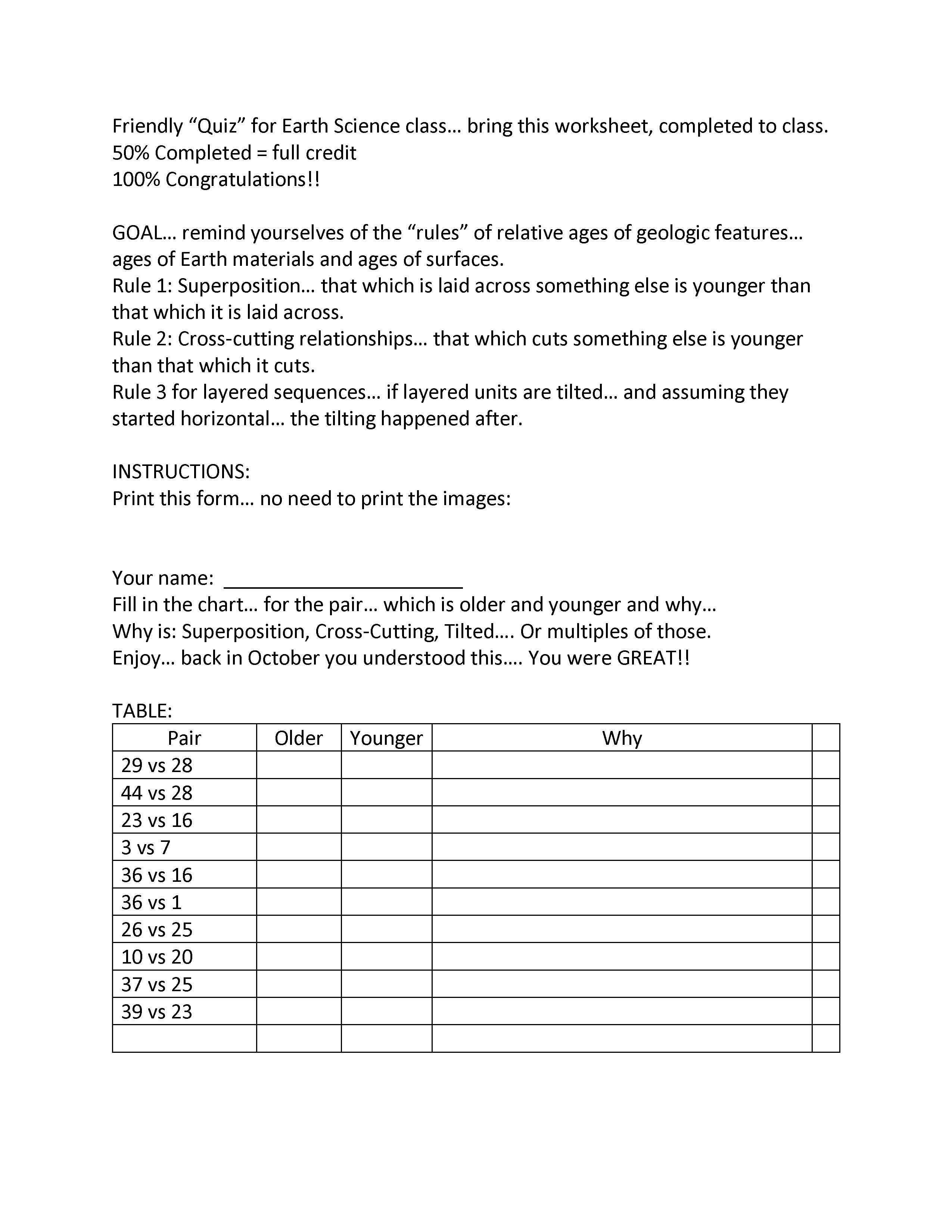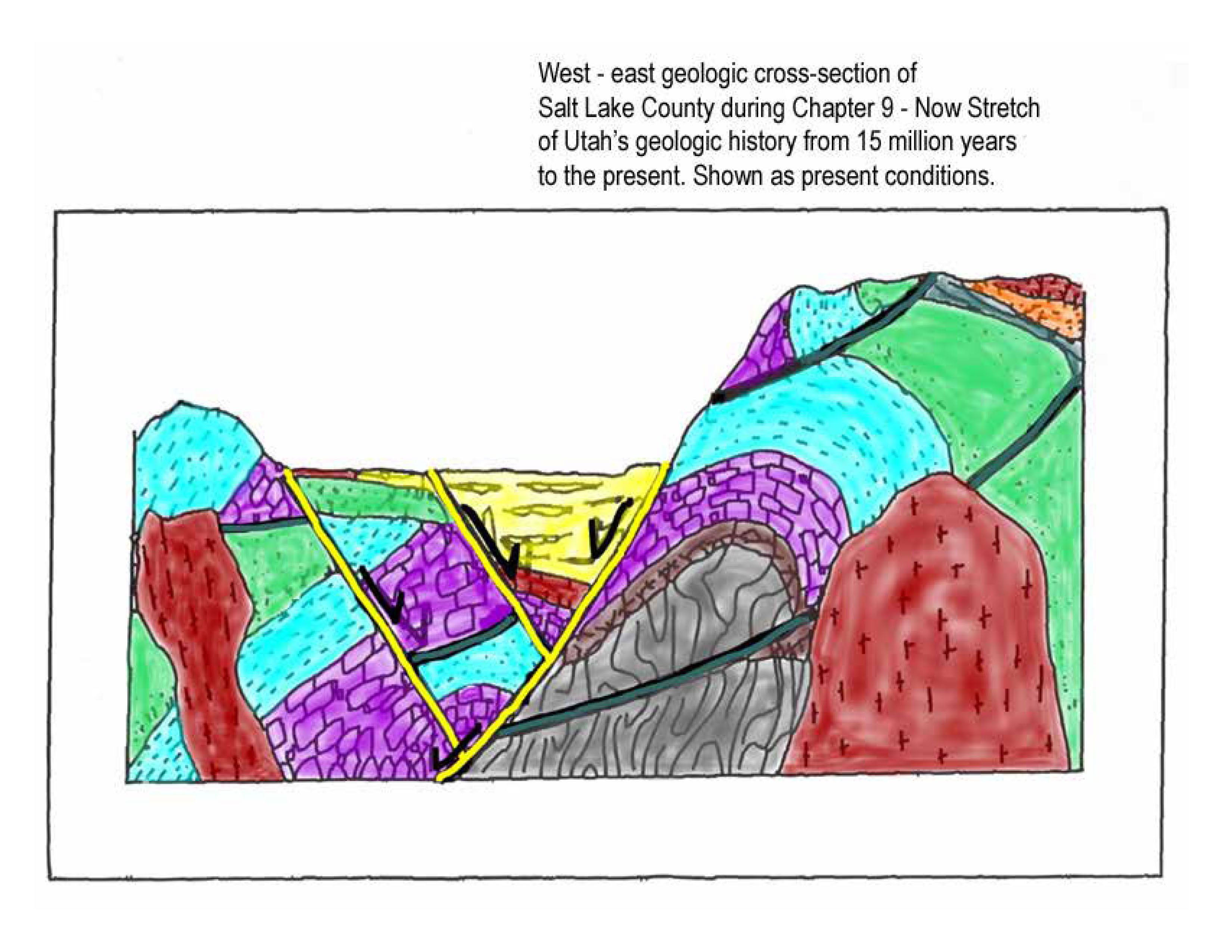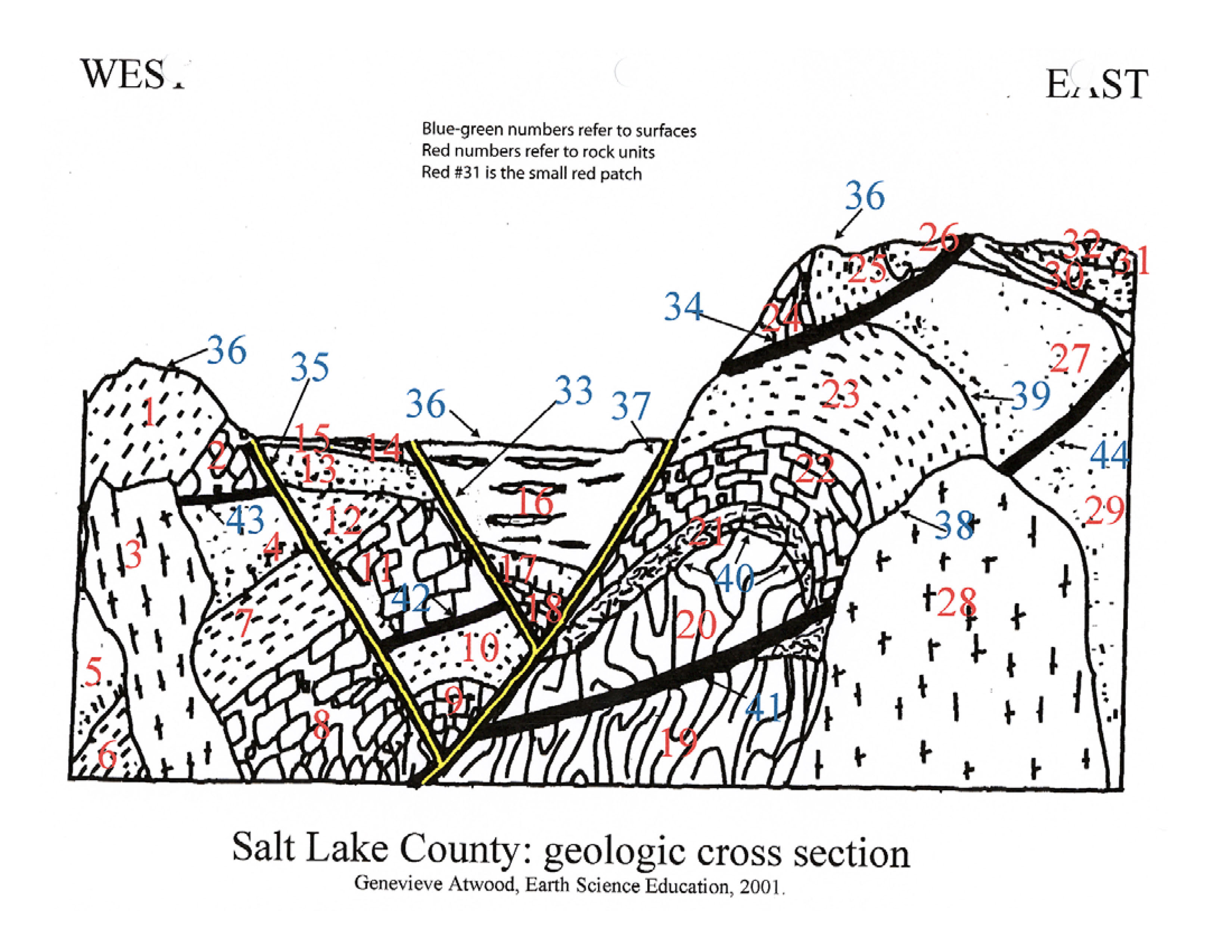Earth Science Outside — in January it’s inside! –y2018-2019- Via SLDistrict
General information for Session 4 – held at Huntsman Cancer Hospital.
January 22/24 session… Tuesday/Thursday

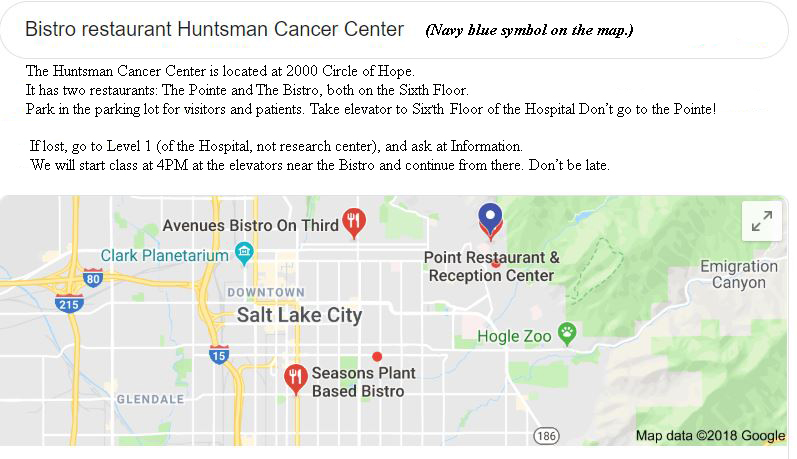
LOCATION and DRIVING DIRECTIONS.
Huntsman Cancer Hospital (HCH)
Address: 1950 Circle of Hope Drive, Salt Lake City, 84113
Meet on the 6th Floor common area of the HCH near the Bistro Cafe. (near the elevators that run from the basement parking, to the main lobby, to diverse floors for doctors’ appointments, and treatments, to the 6th Floor. Note: we meet at the Bistro Cafe, not the Point Restaurant.
Driving directions
Drive to the Huntsman Cancer Hospital on the University of Utah campus.
Follow signs to park at the underground parking for patients and visitors to the Huntsman Cancer Hospital. If asked, let the parking attendant know you are going to the 6th floor for a meeting.
Enter the hospital as though you were going to a doctor’s appointment – through glass doors to the elevators. Up to the 6th Floor. In front of you is an impressive view west to the Oquirrh Mountains. Immediately to the right (north and east) is the Bistro Cafe. Lost? Go to the lobby of the HCH and ask for directions to the Bistro Cafe (not the Point Restaurant).

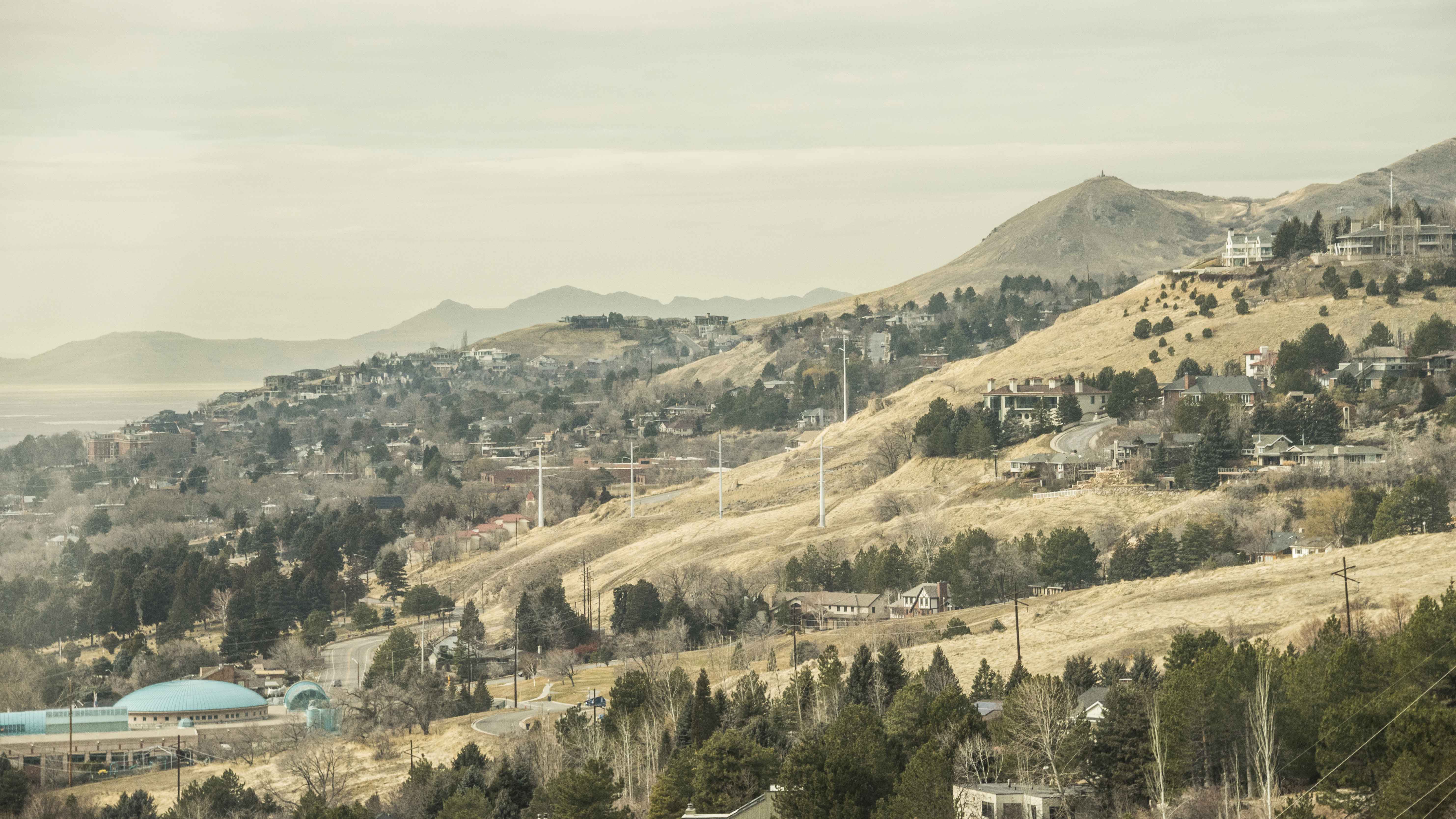
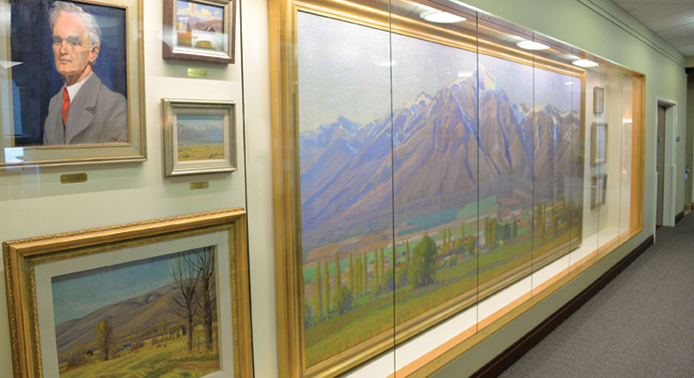

Intended AGENDA. Begin outside the Bistro Café (sixth floor just right (north) from the elevators).
Obviously, this is a hospital. Respect is part of our session. Do not become separated, it will be difficult to reconnect with us.
4 PM Repeat to remember, Remember to repeat.
From the 6th floor view, look at patterns, “Earth Science Outside” the HCH windows.
What shapes of landforms interest you? (Directed curiosity… role model how you can inspire curiosity).
What patterns of bedrock versus sediments do you recognize? (Directed curiosity… role model genuine interest).
Review “rules of younger than / older than” – What do we see outside that was on the “quiz” due in at the beginning of this session?
4:15 – 4:45 — Move to a few yards north and east of the Bistro Café.
Great landscape artists “read landscapes.” They see patterns. Study LeConte Stewart’s depiction of Mount Ben Lomond of Weber / Davis Counties.
4:45 PM Restroom break..
4:50 PM – 5 PM — Walk south and then to the left to the Shoreline Room.
HCH has graciously scheduled a seminar room for us. This provides a respite from walking, and opportunities for a brief review of concepts. The views from the windows include details of topography associated with Lake Bonneville, an “Ice Age” lake almost 1000 ft deep when at the level of HCH. Appreciate how patterns of Earth materials (bedrock versus sediment; and sediment size and shapes), and shapes of landforms (shorezones) are ways to identify former shorelines. The way to spot the Bonneville Shoreline, the highest level flooded by Lake Bonneville 15,000 years ago is to ask yourself: “At what level does it look like it was never flooded.” If never flooded, then above Bonneville. If “looks as if it were flooded” then it’s probably below the highest level of Lake Bonneville. Landforms, materials and processes are inter-related.
5:30. Walk to the elevators by the Point Restaurant and take the elevator to the Lower Level … “to HCH and parking.”
NOTE: Only two elevators go to that level! Don’t become separated. Take the elevators down as far as they go… you may need to change elevators to the ones that go all the way down to the Lower Level.
5:35 – 6 PM. Practice Landscape Literacy in the lower level (basement corridor images).
On the lower level, we will practice “landscape literacy” and discuss ideas on how to inspire curiosity about tectonics, Earth materials, and history. We will practice landscape literacy for images of Utah and elsewhere. Observe patterns that matter for Earth science. Think cause and effect. Be curious about “younger than / older than” relationships. Inspire “guided curiosity.” Phenomena! Indeed, Phenomenal!!
6 PM. We’ll find ourselves back in the HCH and parking garage.
By the end of this session:
teacher participants will have gained confidence taking steps toward landscape literacy. It’s all about patterns. That’s the JOY of landscape literacy. Recognize a pattern, express curiosity, explore a concept. Salt Lake County and most of Utah not only have spectacular geology, we can see it! Go outside, anywhere! Share the JOY. What can you explore, question, find interesting.
For review:
-
Step one: Look around. Be mindful of patterns. Breathe deeply.
-
Step two: Look deliberately at shapes of landforms. Tectonics rules… today as in the past.
-
Step three: Look deliberately at patterns of sediment versus bedrock (Earth materials).
-
Step four: Focus on patterns in bedrock. Is there evidence of layering? What about crosscutting relationships or folding, or tilting of layers?
-
Think of patterns as clues, as pieces of a puzzle. What patterns do you find interesting? Can you see any “younger than / older than” relationships that your students would (a) understand and (b) find interesting? Express curiosity!
LINK to Homework due in class April 2 / 4
The homework is to practice reading a landscape… at Warm Springs Park. It’s to be curious about patterns. Questions… enjoy questions. Please… don’t feel you have to figure out The Answers. A good question is almost always as important as a great answer. Embrace uncertainty. Recognize phenomena.
OPTIONAL
Consider inviting Peg and Genevieve (and invite Peg and Genevieve to your school after hours). Let’s read your landscape together.
HERE is the QUIZ (should be emailed to you – one page to hand in at the beginning of this session (Jan 22 / 24) and the images it references.
